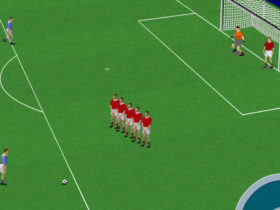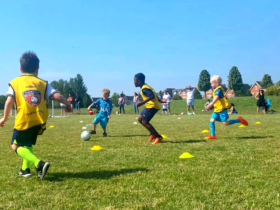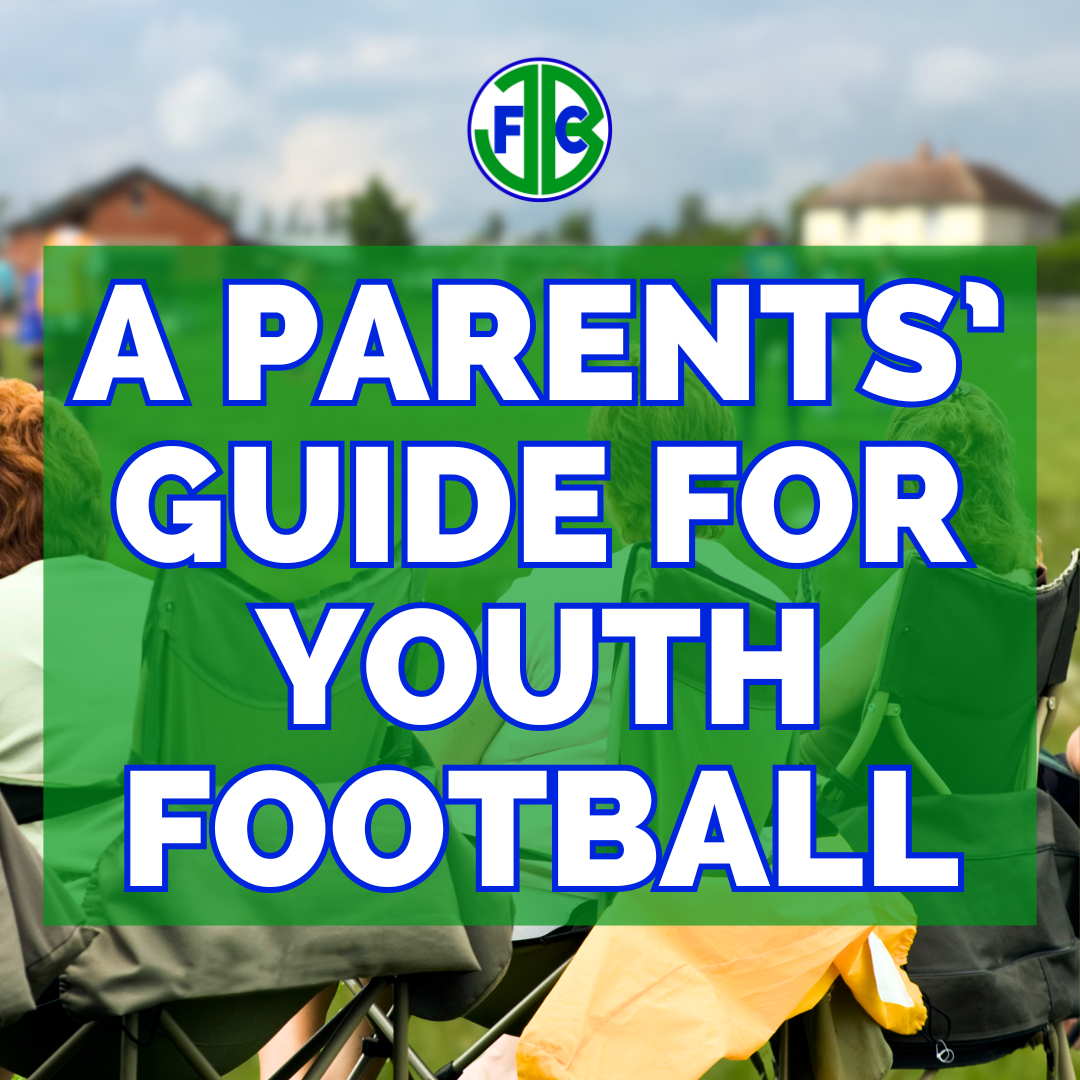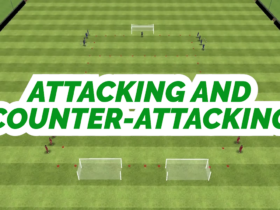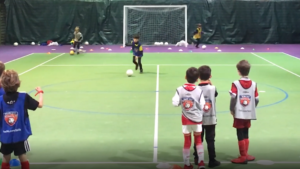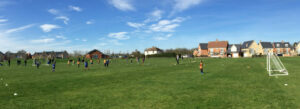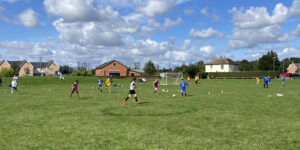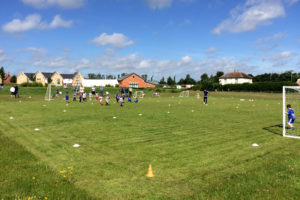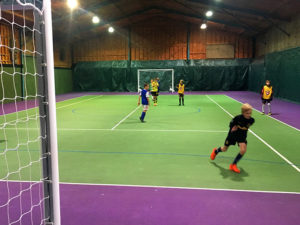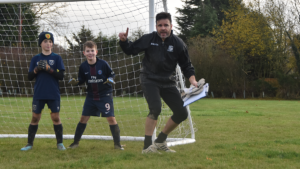Read the latest part of our guide to the UEFA B Coaching Course, written by JBFC head coach Jamie Bradbury.
UEFA B Coaching Course – Day Two
After cramming in so much on day one of the UEFA B Coaching Course, we began by reviewing the content we’d looked at so far and working on the course folders, ensuring that our assignments were completed.
Having been on the Level One and Level Two courses, as well as the Youth Modules, you learn so much about how to coach different groups of people, using styles like command, guided discovery, Q&A, and demonstrations.
Again, there is no right or wrong way, it’s down to the coach to understand the players’ needs and the needs of the session to determine what approach to take.
It was at this point that Jon Gittens (our UEFA B coaching course director) put on an amusing video clip from the Harry (Enfield) and Paul (Whitehouse) show. Paul plays a football manager and works his way around his cosmopolitan team during the half-time talk giving each player instructions in their native tongue.
A lighthearted illustration of what most coaches might have to deal with. While a language barrier may not be an issue, every player learns in a different way and we must understand what is the best one for the circumstances.
We talked about what makes an effective communicator, and some of the ideas that were thrown about were; give clear and accurate information, know the audience, use positive body language, ask open questions, be enthusiastic and refrain from jargon.
There are four different learning styles; seeing, hearing, reading and doing and we discussed the three stages of learning; from cognitive (novice), via associative to autonomous (habitual).
Ideally, when coaching a new technique, you want to take a player from novice to making it habitual, or second-nature, where they don’t really think about the execution of a particular technique.
Day Two of the UEFA B coaching course became heavily focused on practical sessions. Within the course technical guidelines book, there are 30 sessions – covering the various types of practice – that will be shown to us during the first ten days of the course.
I tried to get involved in the sessions, which was no mean feat with 50 candidates all vying for the no. 4 or no.10 bibs. It was like being back at school, lining up against the wall hoping to get picked. There was five sessions ahead of us on day two, though, so surely my chance would come.
5 Retain Possession
Squad Practice
This practice was focused on passing, movement and support to retain possession. Colin Reid (UEFA B coaching course tutor), a former coach at West Ham United and Tottenham Hotspur, was meticulous in his organisation, ensuring players knew their role within the practice. So, rather than drawing up Xs or Ys on the board, it was position specific numbers, with bibs also laid out in the same fashion.
Two teams were set up 9v7, with the emphasis on keeping the ball, remaining patient, playing passes to maintain possession and looking for opportunities to break the lines, ie get the ball through the midfield line or defensive line to one of your team-mates. To add a bit of realism, Colin gave the team of nine – the group he was focusing on – a two-goal lead to encourage players not to force the pass, but to be patient.
Here are a couple pieces of advice I took from this practice: Move defenders out of the way by ‘lending’ a team-mate the ball – give it, get it back. Play forward if you can secure possession.
6 Passing and Receiving Priorities
Small-Sided Game 8v8 – click to download pdf created with The FA Coach’s App
While some practices were being delivered how coaches would deliver them, some were demonstrated in a coach educator fashion. That’s how Jon showed us this one, talking as much to the candidates on the sideline watching as he was to the players taking part.
He highlighted some important things to consider when coaching; organise the practice, understand the technical points of the practice – which can mean dipping back into Level 2 knowledge – adopt a good coaching position, observe the session and diagnose faults, manage opposition so they don’t destroy any pictures you are trying to create, affect players around the ball and away from the ball.
Above all, though, the one thing that will really stick with me is something Jon said that Colin had mentioned in his practice the day before. “Every pass sends a message,” he said. And it is a great way to explain to players in possession how they can dictate the play. More often than not, the player in possession can see a picture forming around him, or her, so a good pass to a team-mate will tell them what they can do next.
A pass in front tells them to get going forward, a pass short might be saying ‘lay it back’ or ‘protect it’. Obvious stuff, really, but “Every pass sends a message” will be easily understood by players.
7 Receiving Skills and Protecting the Ball
Squad Practice
It was Richard Carter’s (UEFA B coaching course tutor) turn to go to work and his focus was also on retaining the ball, particularly when receiving a pass and he looked primarily at three types of receiving; with back to a defender, facing a defender and beyond a defender.
8 Running With The Ball
Skill Practice progressing to Squad Practice – click to download pdf created with The FA Coach’s App
Ted Dale’s (UEFA B coaching course tutor) topic was a double session on running with the ball, which started with a simple skill practice using seven players. The small pitch was set-up into thirds with a 3v1 in one end and an 2v1 at the other. The aim was to get players breaking out of one end zone and carrying the ball into the other end.
I was finally able to get involved in this one, but was on the periphery for the first part, before stepping in when more players were needed for the 8v8 squad practice element. I had a few touches but I’m not a renowned left-back – though I did perform one ‘surging’ run. It was enough to see me happily sit out of the last session of the day.
9 Playing Out From The Back
Pattern Practice
Colin worked with ten players adopting appropriate positions in a 4-3-2 formation, with a target man in the centre forward role, using two thirds of the length of the pitch and the full width.
With the centre backs moving to the corner of the penalty area, full-backs going wide, wingers pushing up, midfielders creating depth and the forward’s position as a target beyond the half-way line, it gave the goalkeeper a number of passing options.
Having worked through the practice a few times, playing from the keeper to eventually getting the ball into the striker, Colin introduced opposition gradually, building up towards a more realistic scenario. He also awarded his team with points; three for a forward pass, one for a pass to a team-mate, minus one for a loose ball.
I found this a really good practice to help players see what their roles should offer their team as soon as their keeper recovers possession and they look to go on the attack.
The end of the practice wrapped up day two, and after a very quick debrief back in the classroom – with a full review of the practices saved until day three of the UEFA B Coaching Course, we headed home.
Check out FootballCommunion.com as Jamie continues his guide to the UEFA B coaching course.
If you have any questions you can follow Jamie on Twitter @jamiebradbury



